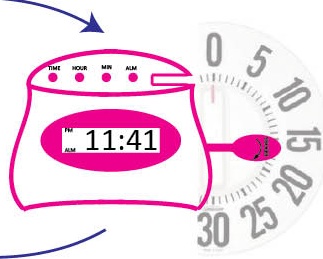
This is my submission for the first Assignment for Basic Interaction Design: Control Redesign.
“Students will explore assigned contexts, looking for real world controls that need to be improved. They will redesign a control of their choice and present their design in class.”
I chose to redesign the snooze button because of the amazing trouble I have with alarms: setting, snoozing and otherwise. I also had ideas to use a more tangible interaction to set the clock and alarm time, but the assignment asked us to focus on a single control. The SNOOZE LEVER creates a tangible interaction for the alarm clock snooze function that solves many of the problems surrounding the ubiquitous snooze button interaction.
The Status Quo:
When the alarm sounds, a sleeper has two options:
- Press the “Alarm Set/Reset Button” to turn the buzzer off and reset the alarm to
sound the following day. - Hit the “Snooze Bar” to temporarily stop the buzzer and be roused again in 9 minutes.
The Problems:
- There is usually no way to control the length of the snooze interval.
- There is no way to tell if the alarm is reset or in snooze mode, and no way to know how long until the buzzer will sound again.
- The Snooze and Alarm Reset functions are interrelated, but artificially separated.
The SNOOZE LEVER:
The SNOOZE LEVER creates a tangible interaction that solves many of the problems surrounding the ubiquitous snooze button interaction. The lever sets the snooze interval like a kitchen timer, slowly retreating back to the alarm-sounding position.
- The SNOOZE LEVER allows a snoozer to control the snooze interval, snoozing anywhere from 0 to 15 minutes.
- It is simple to see the system status by looking at the position of the lever. The lever is either locked into the reset position, or popped out to the side for snooze mode.
- Easy to pull down into snooze mode, but takes two hands to push into the alarm reset position, making it hard to turn off the alarm accidentally.